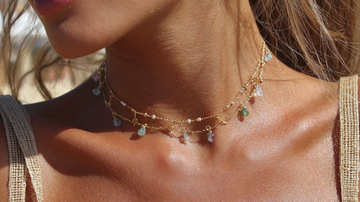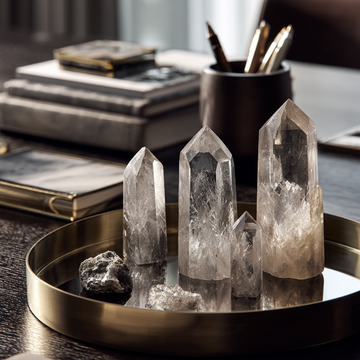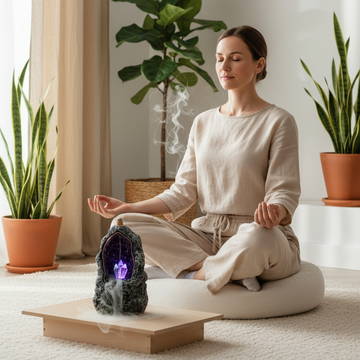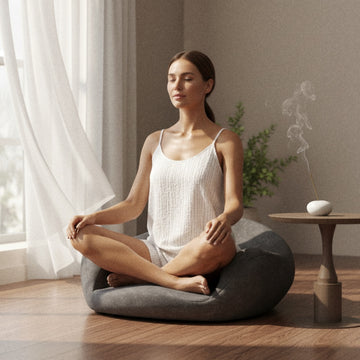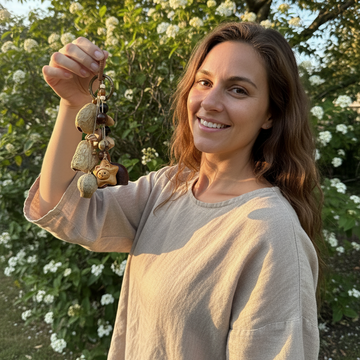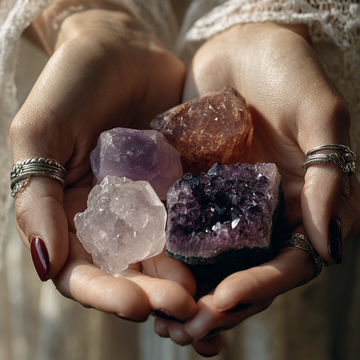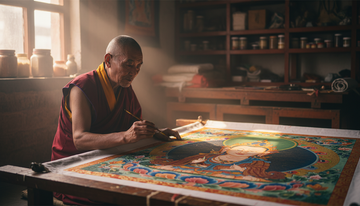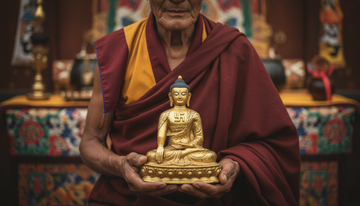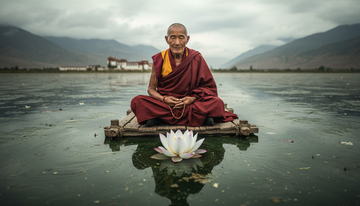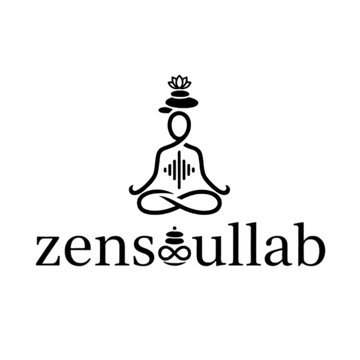Have you ever been stopped in your tracks by a piece of art? One so vibrant and intricately detailed that it seemed to pull you in, its serene, divine figures exuding a power that quiets your mind instantly. If so, you may have encountered a Thangka.
Most people who see a Thangka for the first time are blown away by its exquisite craftsmanship. But if you think it's merely a beautiful decoration or a piece of fine art, you're missing out on its true soul. A Thangka is so much more than what meets the eye. It's a window into a sacred world, a meditation in itself. Every brushstroke by the artist is a conversation with the divine.
Today, let’s gently pull back the veil on this mystical art form.
What is a Thangka? It’s Not Just “Painted”
Let’s start by shifting a common perception. A Thangka isn't simply "painted"; it is brought to life through a process of devotion and deep spiritual practice. It's a traditional Tibetan scroll painting, typically created on a cotton or silk canvas using natural mineral and plant-based pigments. The subjects are usually Buddhist deities, mandalas, or spiritual masters.
But unlike ordinary painting, creating a Thangka is a highly disciplined and ritualistic journey.
A true Thangka artist must first and foremost be a devout Buddhist practitioner. Before ever touching a brush to the canvas, they perform rituals of purification—bathing, burning incense, and chanting mantras to achieve a state of deep concentration and inner peace. They believe that only with a pure and untroubled mind can they receive the blessings of the deities and channel life into the images they create.
The pigments themselves are gifts from the earth, treated with reverence. Gold is ground from real gold, red from agate and cinnabar, green from malachite. These precious minerals are painstakingly ground by hand into a fine powder and mixed with animal glue and ox bile as a binder. This is why a Thangka’s colors can remain brilliant for centuries, as if untouched by time.
An Artist's Meditation, Captured on Canvas
The challenge of creating a Thangka extends far beyond materials and rituals. Artists must strictly follow the iconographic rules laid out in ancient scriptures. The proportions of a Buddha's body, the gestures of the hands (mudras), the ritual objects held—even the direction of the gaze—are precisely defined. This isn't to stifle creativity, but to accurately transmit the teachings of the Dharma.
The entire process is incredibly time-consuming. A single, complex Thangka can take months, or even years, to complete. During this time, the artist pours their faith, discipline, and understanding of Buddhist philosophy into every line and shade. Each stroke is a repetitive, meticulous, and profoundly sacred act of meditation.
So, when you gaze upon a Thangka, you are not just seeing brilliant colors and a complex composition. You are witnessing the culmination of an artist's unwavering focus and devotion. The painting itself is imbued with the energy of that spiritual practice.
The Thangka: A Monastery You Can Carry
Historically, nomadic practitioners in Tibet would roll up Thangkas and carry them on their backs. Wherever they stopped, they could unroll and hang the Thangka, instantly creating a personal altar for prayer and meditation. In this way, a Thangka served as a mobile monastery—the center of their faith and spiritual refuge.
It was not only an object of veneration but also a visual encyclopedia of Buddhist teachings. For practitioners who couldn't read, the vivid stories and figures depicted on Thangkas were their primary means of learning the Dharma.
So, the next time you encounter a Thangka, I invite you to pause a little longer. Don't just look at it with your eyes; try to listen to it with your heart. Feel the devotion behind the golden lines, hear the stories within the colors, and connect with the timeless, peaceful energy it holds.
It truly is so much more than a painting.

